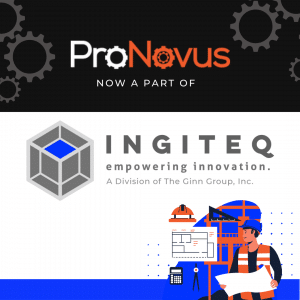Lately, supply chain disruptions have become commonplace as we deal with a worldwide pandemic, geopolitical tensions, rising fuel costs, and a shortage of workers. When we have a well-functioning global supply chain, we can employ just-in-time and outsourcing strategies to reduce costs, but we are taking on significant risk if we don’t at least ask the question “what do we do if the supply chain is disrupted?”
Some of this risk is “baked into” our products based on our selection of components and vendors in the design phase. Product developers are focused on technical and cost issues with the supply chain issues usually considered well down into the design process. We look at the current capabilities of the vendors to deliver, but usually don’t consider the various scenarios that can impact key component availability ranging from the vendors’ business considerations to large-scale geopolitical issues. To be able to keep our business moving we need to have a “Plan B” and maybe C, D, and even E.

For example, I once had a customer who was developing a new product offering and was deciding between two vendors for the key component which was highly complex and designed specifically for this product – not off the shelf. Company A was large with a great technical capability and was judged to be a very low technical risk, but my client would be a relatively small customer and might be easily forgotten when bigger customers came calling with orders.
Company B was smaller with the good technical capability to design and produce the component but was judged to have a bit higher technical risk. However, for Company B this project would be their biggest project and a high priority in the company – they would do almost anything to keep my client happy. I recommended that the client accept a bit more technical risk upfront but avoid future supply chain risk by selecting Company B.
However, the client was very risk-averse to the product launch, so they selected Company A. The product launch went well and had great customer acceptance, so much so that the client needed to scale up dramatically to meet customer demand. Unfortunately, the product launch also ignited a very serious response from established players in that market segment so now Company A was inundated with large orders from much larger companies – my client’s competitors.

When my client approached Company A for another round of production, Company A did not have the capacity to fill the order in a reasonable time frame while switching to another supplier would entail serious delays to recertify the components. The bottom line is that my client ultimately went out of business because they could not get the components in time to scale up to ward off their competitors.
The lesson here is that early in the design phase of any product or service we must consider the impacts of supply chain disruptions and have alternatives in place. Look beyond the simple how many, how much, how fast metrics to look at factors that could impact a supplier’s ability to meet your needs as conditions change. When possible, this means for key components having more than one source, preferably in different regions, even if this means accepting somewhat higher costs. Nobody likes higher costs but that must be weighed against the cost to your company of not being able to provide your product to your customers.
For innovative solutions for your supply chain and product design needs, contact us today.


